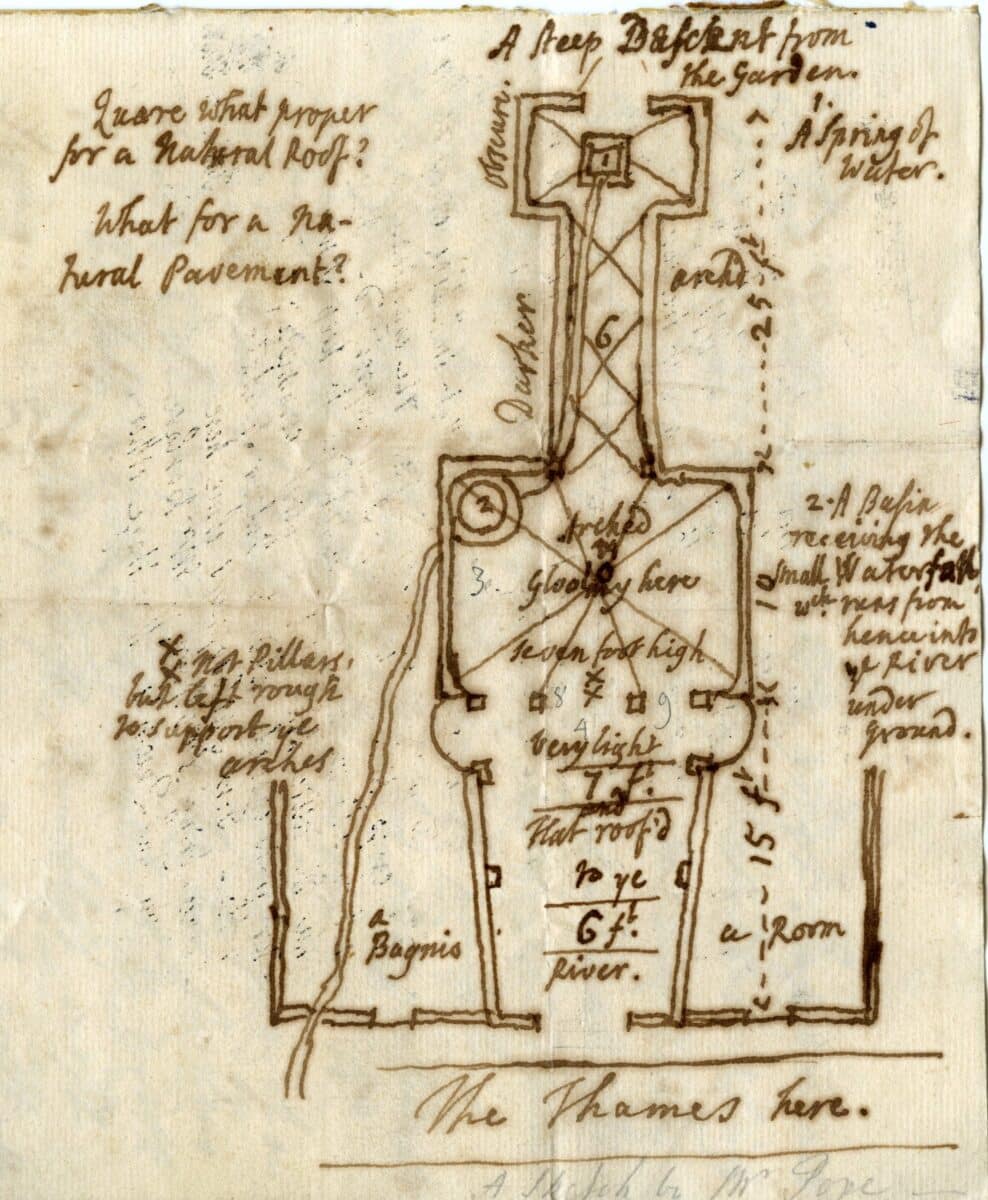DMJ – ‘All the varieties of Nature’s works under ground’: the Geological Imagination of Alexander Pope

January 1740. Courtesy of the Morrab Library, Penzance.
In 1739, the English poet Alexander Pope transformed his grotto – a subterranean passage that used to consist of a cryptoporticus with architectural orders – into ‘a mine’. Minerals were encrusted into the walls in a manner that imitated those found underground. Previous scholars have considered this to be a manifestation of the poet’s emergent interest in geology, as he appeared to have abandoned his earlier ‘poet’s plaything’ in order to ‘strictly follow Nature’.
Whilst it is true that the transformation of Pope’s grotto into a mine was encouraged by an up-to-date knowledge of the interior of the earth, this essay stresses that his approach to that knowledge was not divorced from his earlier conceptualisation of nature, which was derived from the Hermetic-Neoplatonic tradition of the Renaissance. For Pope, nature was not limited by rules of proportion or geometry, nor was it an objective, natural world as construed by modern science, which the poet, a member of the Scriblerian club, satirised. Rather, at the core of Pope’s dynamic and intimate vision of nature were the omnipresent, regenerative cycles of natural forces. And just as the poetic mind was analogous to nature or the earth, so Pope’s imagination follows their processes.
Placing Pope and his grotto in this intellectual context and reading across his biography, his literary productions, and his networks – as well as recent scholarship on the poet – this essay sheds new light on Pope’s grotto and his geological imagination. Shifting the focus from images of form (architectural forms metamorphosing into a mine) to images of matter (the operations of water and fire or light), the text explores two aspects of the ‘earth matter’ in the grotto as processes of nature: the watercourse that enables a ‘perpetuating rill’ of spring water to flow to the Thames and hypothetically return to the grotto, fulfilling a hydrological cycle; and the positioning of minerals integrated with water and light (fire) in reference to their regrowth in the womb of the earth as alchemical processes. All reveal the entangled inflections of 18th-century literary (mythological), scientific and political culture.
Pope’s fascination with imitating a mine may be – I suggest – that it is analogous to the most fertile imagination, with its rich variety of minerals the product of the incessant play of subterranean forces. In transforming the grotto into a mine, Pope did not abandon his ‘poet’s plaything’ or his material imagination, which had never departed from the subterranean realm. Rather, the ‘realistic’ imitation of the mine was in accord with poetic fantasy. Either made drowsy by the murmurs of the spring, or dazzled by the thousand points of rays, or seeing ‘pointed Crystals break the sparkling Rill’, the poet not only interacts with the rhythms of nature, his nymph-muse, but also becomes one with her. His imagination merges into the works of nature underground, in the endless regenerative cycle of the earth.
DMJournal–Architecture and Representation
No. 1: The Geological Imagination
Edited by Mark Dorrian and Kurt Forster
ISSN 2753-5010 (Online)
ISBN (forthcoming)
About the author
Yue Zhuang is Senior Lecturer in Chinese, Art History and Visual Culture and Director of the Global China Centre at the University of Exeter. Having trained in China, Britain, and Switzerland, she specialises in the landscape art history of China and Britain as well as in the cross-cultural contacts between China and Europe in the early modern period.
She has received grants and fellowships from various institutions such as the Swiss National Foundation, EU Marie Skłodowska-Curie Actions and the Leverhulme Trust. Her recent publications include, among others, The Hermeneutical Tradition of Chinese Gardens (2015) (in Chinese), Entangled Landscapes: Early Modern China and Europe (2017), and articles on Sir William Temple’s reception of China. She is currently completing a monograph on the funereal imagination and 18th-century British architecture and landscapes, which features a case study of Alexander Pope’s Twickenham villa.
Zhuang’s DMJ article is referred to in the LRB blog – In Pope’s Grotto by Gillian Darley, here.
Click here to receive updates about the journal, and future calls for abstracts.

